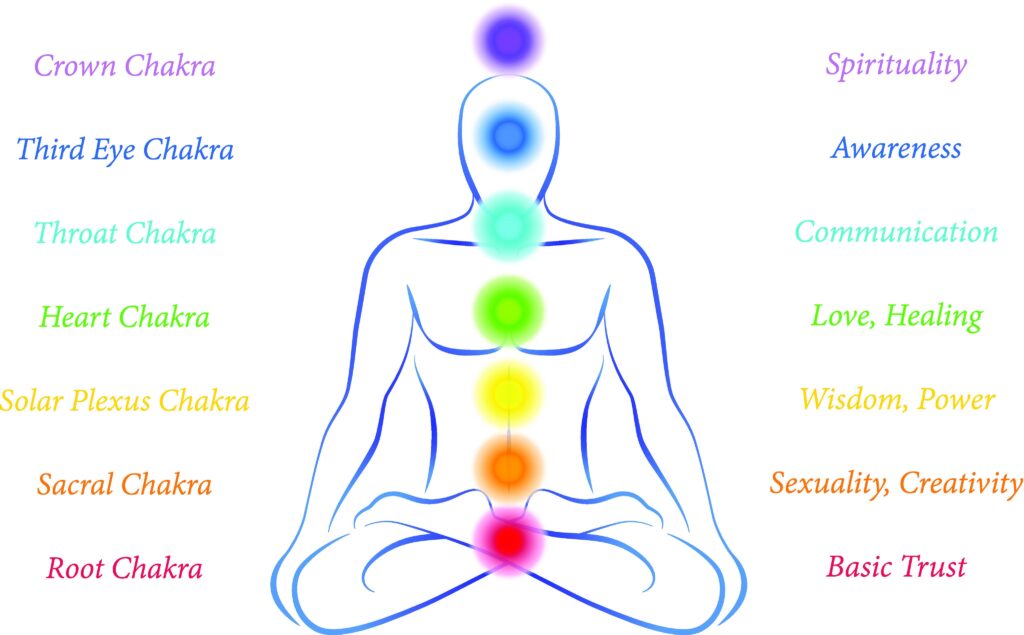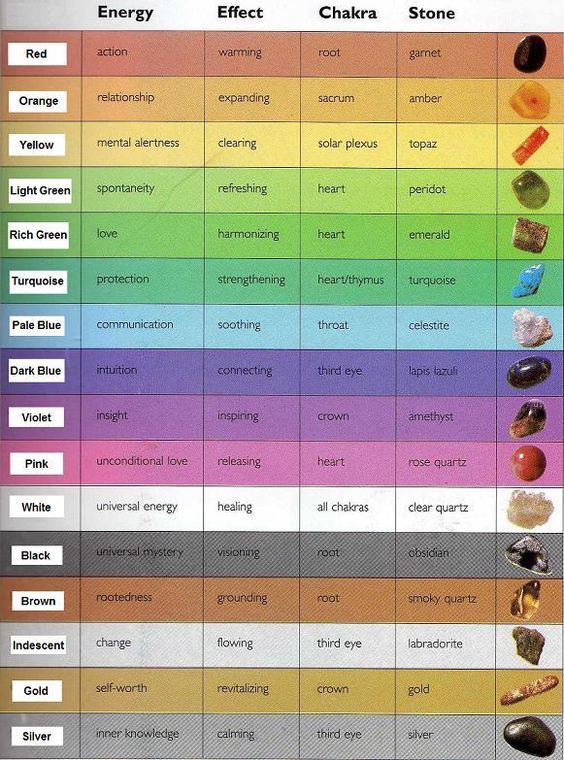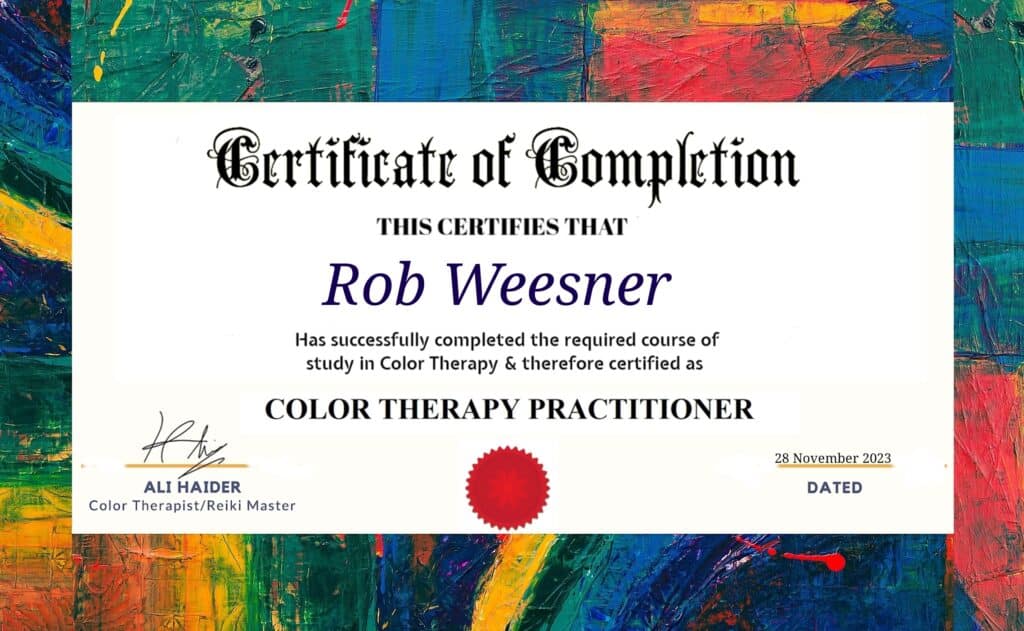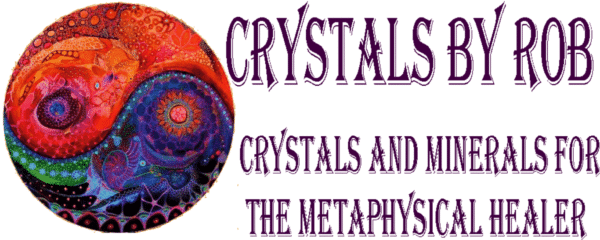Color Therapy
Color Therapy
Color therapy, also known as chromotherapy, is a form of therapy that uses color and light to treat certain mental and physical health conditions. We can trace this form of therapy back to the ancient Egyptians. They made use of sun-filled rooms with colored glasses for therapeutic purposes.
This type of vibration medicine is effective, because color exists as a form of light, which means it’s a variation of electromagnetic energy that can be used to effect changes in a living being. Each color used in chromotherapy has unique healing properties, so each person’s treatment is different. The colors used will depend on what condition they’re seeking to alleviate.
Color Therapy
If you have doubts that this type of color therapy works, just look at the effect that the sun has on all of us. Particularly, a lack of sunshine can cause people to experience seasonal affective disorder, or SAD, which leaves the individual feeling lethargic, depressed, or anxious. When color therapy is used in these instances, those depressive symptoms are often reduced or alleviated altogether.
At some point, we’ve all experienced the ways in which color can affect us. For some people, seeing the green in nature on their daily run is an instant mood booster or they instantly feel a little better wearing a favorite yellow dress. The practice of color therapy can be traced to Indian ayurvedic medicine, which claims that the application of certain colors can correct imbalances in our body’s chakras.
Types of Color Therapy
In color therapy, it is believed that different colors are able to impact the body differently.
- Red: Red is used to energize or invigorate a person who might be feeling tired or down. However, red may also trigger people who might already be tense.
- Blue: Chroma therapists use blue to try and influence depression and pain. Darker shades of blue are also thought to have sedative properties and may be tried for people who experience insomnia or other sleeping disorders.
- Green: Green is the color of nature, and according to chroma therapists, it can help relieve stress and relax a person.
- Yellow: Yellow can be used to improve your mood and make you more happy and optimistic.
- Orange: Orange, much like yellow, can be used to elicit happy emotions from people. The bright warm color is also thought to be able to stimulate appetite and mental activity.
Color Therapy
Techniques of Color Therapy
There are two major techniques of color therapy. It can either be done through sight, that is, by looking at a particular color in hopes that it elicits the desired response in your body, or by directly reflecting certain colors on parts of the body.
Color therapists believe that color can enter our bodies either through our eyes or skin. Each color we can see has its wavelength and unique frequency. Each unique frequency has a different effect on people and is used for different purposes. Warm colors are typically used for stimulating effects, while cool colors are used for calming effects.
Here is a list of other color therapy techniques:
Did you know the different color therapy techniques that can help people express their creativity and inner self? Get ready to discover the power of color therapy and learn the secrets of this transformative technique today!
- Color Visualization: It is a technique that involves mentally thinking about or visualizing certain colors. People can use guided meditation recordings or be guided by a therapist to visualize immersing in a certain color or to visualize the color filling up their body with healing energy.
- Color Bathing: Color bathing is the practice of soaking oneself in a setting where a certain color or group of colors is prominent. Flourished light bulbs, filters, or even colored materials can do this. Spending time in this setting, the person allows the colors to surround and absorb their body.
- Color Breathing: In this technique, individuals focus on their breath while visualizing the inhalation of a specific color and the exhalation of any negative energy or imbalances associated with that color. The process is repeated with different colors, targeting specific areas of the body or emotions.
- Color Meditation: Similar to traditional meditation practices, color meditation involves focusing on a specific color by visualizing it or through physical objects like colored crystals or objects. The individual directs their attention to the color, allowing it to induce relaxation and promote a sense of well-being.
- Color Environment: Creating a harmonious color environment involves a person selecting specific colors for home or work spaces. The color of our environment can significantly impact our emotional well-being, so it’s important to choose colors that promote positivity and comfort.
What Color Therapy Can Help With
Chromotherapy is considered a type of alternative medicine treatment. It has been purported to help with a variety of conditions, including:
- Stress
- Depression
- Aggression
- High blood pressure
- Sleep disorders
- Anxiety
- Certain cancers
- Skin infections
It is important to note that there is no significant evidence that color therapy is effective for any medical condition. According to the American Cancer Society, available scientific evidence does not support any claims that use of light or color therapy are effective in treating cancer or any other illnesses.
Color Therapy

Significance of different colors in Chromotherapy
Have you ever wondered why certain colors make you feel a certain way? Color therapy explores the idea that different colors have unique energies that can impact our mood and overall well-being. However, by understanding the significance of each color, we can use color therapy to cultivate positive emotions and promote healing within ourselves.
- Red is associated with the root chakra in color therapy and is believed to promote vitality, strength, and physical energy. It is also said to have a stimulating effect on the mind. It can help focus and concentration, making it a popular choice for activities requiring mental and physical stamina.
- Orange is associated with the sacral chakra and is often associated with warmth, enthusiasm, and creativity in color therapy. It is believed to stimulate the mind and increase energy levels, making it a popular choice for those who want to boost their mood and motivation. Orange being associated with the sacral chakra, which this chakra is responsible for emotional balance and creativity.
- Yellow is associated with the solar plexus chakra in color therapy and is believed to promote confidence, self-esteem, and personal power. It is also said to stimulate the mind and can help with focus and concentration. Yellow is often used in therapies for digestive issues and is believed to impact the digestive system and metabolism positively.
- Green is associated with the heart chakra in color therapy and is believed to promote balance, harmony, and emotional well-being. It is also said to have a calming effect on the mind and can help with relaxation and reducing stress. Green is often used in therapies for physical healing and is believed to impact the immune and respiratory systems positively.
- Blue is associated with the throat chakra and is often associated with calmness and peace in color therapy. It is believed to have a soothing effect on the mind and body and can help relieve stress and anxiety. Blue is also associated with communication and self-expression, making it a popular choice for those who want to improve their communication skills.
- Indigo is associated with the third eye chakra in color therapy and is believed to promote intuition, perception, and spiritual awareness. It is also said to have a calming effect on the mind and can help with mental clarity and focus, making it a popular choice for meditation and spiritual practices.
- Violet is associated with the crown chakra and is often associated with spirituality and higher consciousness in color therapy. It is believed to have a calming effect on the mind and can promote feelings of peace and relaxation. Violet is also said to help with mental clarity and focus, making it a popular choice for meditation and spiritual practices.
- Pink is often associated with love, compassion, and kindness. In color therapy, pink is believed to have a calming effect on the mind and body. It is said to promote feelings of warmth and comfort and can be used to help reduce feelings of anxiety and stress. It is also believed to have a healing effect on the heart chakra, which is associated with love and emotional balance.


Benefits of Color Therapy
Over the decades, color therapy has been purported to provide several benefits ranging from physical to mental, including:
- Stress relief: Certain colors like blue and green are thought to have soothing effects on people who are stressed or anxious.
- Boost your appetite: Warm and stimulating colors are thought to boost your appetite when you struggle with having a desire for food.
- Seasonal affective disorder: People mainly suffer from seasonal affective disorder during colder weather because of the lack of sunlight. Certain types of bright light therapy have been shown to be of benefit for this mood disorder. Color therapy also suggests the unproven idea that warm colors like yellow and orange could also help with this.
- To boost your energy: Colors such as red and yellow are believed to boost your energy and make you more motivated.
- Emotional balance: Colors can influence our emotions and moods. For example, warm colors like red and orange can stimulate and energize, while cool colors like blue and green can soothe and calm. Color therapy helps restore emotional balance by using the appropriate colors to enhance or diminish certain emotions.
- Physical healing: Each color is associated with specific healing effects like color therapy for anxiety or any disorders. For example, red is believed to increase stamina and boost circulation, while blue has a calming effect and can reduce pain. Color therapy uses these associations to promote physical healing and ease various ailments by exposing the body to the desired color.
- Mood enhancement: Colors have the power to uplift our spirits and improve our overall mood. Bright and vibrant colors like yellow and pink are known to stimulate inner feelings of happiness and joy. Also, color therapy has the ability to enhance mood, fight depression, and reduce stress and anxiety.
Color Therapy
Things to Consider
While the premise of color therapy is that certain colors elicit specific emotions from most people, this isn’t always the case. Human beings are unique. The effects of certain colors on people may range from person to person. Colors most people might find calming or soothing might be anxiety-inducing or depressing to others.

Angel Tuning Forks Sound Healing Session
Aura Balancing Crystal Grid Distant Healing
Chakra Crystal Grid Distant Healing
Recent Blog Posts
- History Of Yellow Fluorite
- History Of Green Calcite
- History Of Blue Calcite
- History Of Purple Fluorite
- History Of Green Fluorite
- History Of Orange Calcite
- History Of Black Tourmaline
- History Of Celestite
- Metaphysical Healing Properties Of Black Tourmaline With Hematite
- Metaphysical Healing Properties Of Blue Tigers Eye
- Metaphysical Healing Properties Of Yellow Tibetan Quartz
- Metaphysical Healing Properties Of Snow Quartz
Blog Categories
- Aura
- Books
- Chakras
- Creating Intention Bowls
- Crystal – Programming, Cleansing, Chakra Info
- Crystal Grids
- Crystals And Angels
- Crystals Related To Deity Spirit Guides
- Elements
- Feng Shui
- Geological Properties Of Crystals
- History Of Crystals
- Incense – The History Of, How To Make, And Incense Recipes
- Manifesting
- Meridians
- Metaphysical Properties Of Crystals And Stones
- Properties Of The Shapes Of Stones
- Reiki Articles
- Rituals
- Sacred Geometry
- Sacred Space
- Sound Healing
- Stones For Ailments
- Top Stones Lists
- Uncategorized
- Uses Of Crystals In Religion
- Video Blogs
- Actinolite33 products
- Agate7474 products
- Ajoite33 products
- Alantisite11 product
- Amazonite11 product
- Amber55 products
- Amegreen11 product
- Amethyst6262 products
- Amethyst Stalactite22 products
- Ammonite Necklaces11 product
- Amphibole In Quartz2323 products
- Angel Aura Quartz44 products
- Angel Phantom Quartz55 products
- Angel Tuning Forks Sound Healing Session11 product
- Angelic Crystal Energy Attunements1616 products
- Angelite11 product
- Apache Tears11 product
- Apatite11 product
- Apophyllite44 products
- Apophyllite With Stilbite22 products
- Apple Green Aura Quartz11 product
- Aqua Aura Quartz11 product
- Aquamarine33 products
- Aragonite44 products
- Arcturian Reiki Attunement22 products
- Arkansas Quartz1010 products
- Aura Balancing Distant Healing11 product
- Aura Quartz Crystals66 products
- Auralite44 products
- Aventurine33 products
- Banded Black Agate22 products
- Beads88 products
- Black Tourmaline88 products
- Bloodstone11 product
- Blue Lace Agate33 products
- Book Of Shadow Pages4545 products
- Books On Crystals1616 products
- Botswana Agate33 products
- Cabochons1919 products
- Calcite1818 products
- Candle Quartz99 products
- Carnelian44 products
- Carved Penis Crystals11 product
- Celestite33 products
- Chakra88 products
- Chakra Grids22 products
- Chalcedony55 products
- Charoite11 product
- Chiastolite66 products
- Chlorite99 products
- Chlorite Lemurian Crystals66 products
- Chrysocolla33 products
- Citrine1212 products
- Clam Shell Jasper44 products
- Clear Lemurian Crystals66 products
- Clear Quartz2121 products
- Coffins33 products
- Coprolite22 products
- Coral11 product
- Crystal Balls / Spheres130130 products
- Crystal Eggs3131 products
- Crystal Grid Distant Healing22 products
- Crystal Healing Course11 product
- Crystal Notes11 product
- Crystal Reiki Session11 product
- Cut And Polished6161 products
- Danburite22 products
- Dendritic Opal11 product
- Dendritic Quartz22 products
- Desert Rose22 products
- Diamantina Quartz Crystals44 products
- Diaspore11 product
- Dragi Jade11 product
- Dragons Blood Jasper44 products
- Druzy Quartz33 products
- Dumortierite11 product
- Elestial Quartz Crystals66 products
- Energetic Protection From Negative Energy Session11 product
- Energy Healing11 product
- Euchlorite88 products
- Fenster Quartz22 products
- Fire Amphibole66 products
- Flames55 products
- Flower Agate44 products
- Fluorite3434 products
- Garnet22 products
- Garnet In Schist11 product
- Geodes1616 products
- Girasol11 product
- Golden Healer3434 products
- Grape Agate22 products
- Green Chert11 product
- Green Opal22 products
- Halite11 product
- Hearts3434 products
- Hematite77 products
- Hickoryite22 products
- Honey Calcite33 products
- Included Quartz2020 products
- Included Quartz Free Form Prisms99 products
- Indigo Gabbro44 products
- Intention Bowls44 products
- Ironstone11 product
- Jade99 products
- Jasper2929 products
- Kammererite11 product
- Labradorite55 products
- Lake Superior Agate44 products
- Lapis Lazuli22 products
- Larvikite11 product
- Laser Wand Crystals33 products
- Lemon Quartz11 product
- Lemurian Quartz Crystals3434 products
- Lepidolite33 products
- Lithium Quartz Crystals1010 products
- Lodolite Quartz Crystals33 products
- Love Bowls11 product
- Malachite11 product
- Manganese Included Quartz44 products
- Message Wands1010 products
- Mini Spheres2121 products
- Montana Agate22 products
- Mookaite11 product
- Moon Ritual Bowls11 product
- Moon Shaped Crystals66 products
- Moonstone22 products
- Moss Agate33 products
- Mystic Merlinite44 products
- Necklaces3333 products
- Nirvana Quartz11 product
- Obsidian99 products
- Ocean Jasper55 products
- Opal99 products
- Opalite22 products
- Orca Agate1010 products
- Palm Wood33 products
- Peach Quartz55 products
- Pecos Diamonds33 products
- Pendulum Reading11 product
- Pendulums11 product
- Petrified Wood55 products
- Phantom Quartz33 products
- Phoenix Stone44 products
- Pietersite11 product
- Pineapple Quartz11 product
- Pink Amethyst22 products
- Pink Lemurian99 products
- Pink Thulite & Scapolite22 products
- Prasem33 products
- Prehnite33 products
- Quantum Quattro Silica11 product
- Quartz Crystal Clusters1313 products
- Quartz Crystal Points104104 products
- Rain Forest Jasper55 products
- Rainbow Obsidian44 products
- Red Hematoid Quartz Crystals1919 products
- Red Plum Blossom Jade77 products
- Red Tanzurine Quartz44 products
- Removing Negative Energies Bowl11 product
- Rhodonite55 products
- Riebeckite In Quartz11 product
- Rose Quartz1111 products
- Ruby88 products
- Ruby And Tourmaline In Quartz11 product
- Ruby In Fuchsite11 product
- Ruby In Kyanite33 products
- Ruby In Zoisite22 products
- Rutilated Quartz22 products
- Selenite1313 products
- Septarian1010 products
- Serpentine44 products
- Shiva Lingam11 product
- Shungite33 products
- Singing Quartz Crystals11 product
- Skulls33 products
- Smoky Lemurian Crystals1717 products
- Smoky Quartz Cluster22 products
- Smoky Quartz Crystals2929 products
- Snowflake Obsidian11 product
- Solar Eclipse Bowl11 product
- Spectrolite11 product
- Spessartite Garnet On Smokey Quartz11 product
- Spirit Quartz3737 products
- Starbrary Crystals55 products
- Strawberry Quartz Crystals88 products
- Stromatolite22 products
- Subscription Service11 product
- Sunstone22 products
- Super Seven44 products
- Tangerine Quartz44 products
- Tarot Cards11 product
- Tianshan Blue55 products
- Tibetan Quartz99 products
- Tiffany Stone3131 products
- Tigers Eye22 products
- Tourmaline22 products
- Tourmaline In Albite2020 products
- Tourmaline In Quartz55 products
- Towers4545 products
- Tremolite11 product
- Trolleite11 product
- Tumbled Stone Necklaces1010 products
- Tumbled Stones106106 products
- Unakite33 products
- Utah Mineral Flats77 products
- Utah Topaz Crystals11 product
- Variscite22 products
- Vesuvianite11 product
- Yavapai33 products
- Yellow Hematoid Quartz2424 products
- Yellow Quartz22 products
- Yellow Skin Agate55 products
- Youngite11 product
